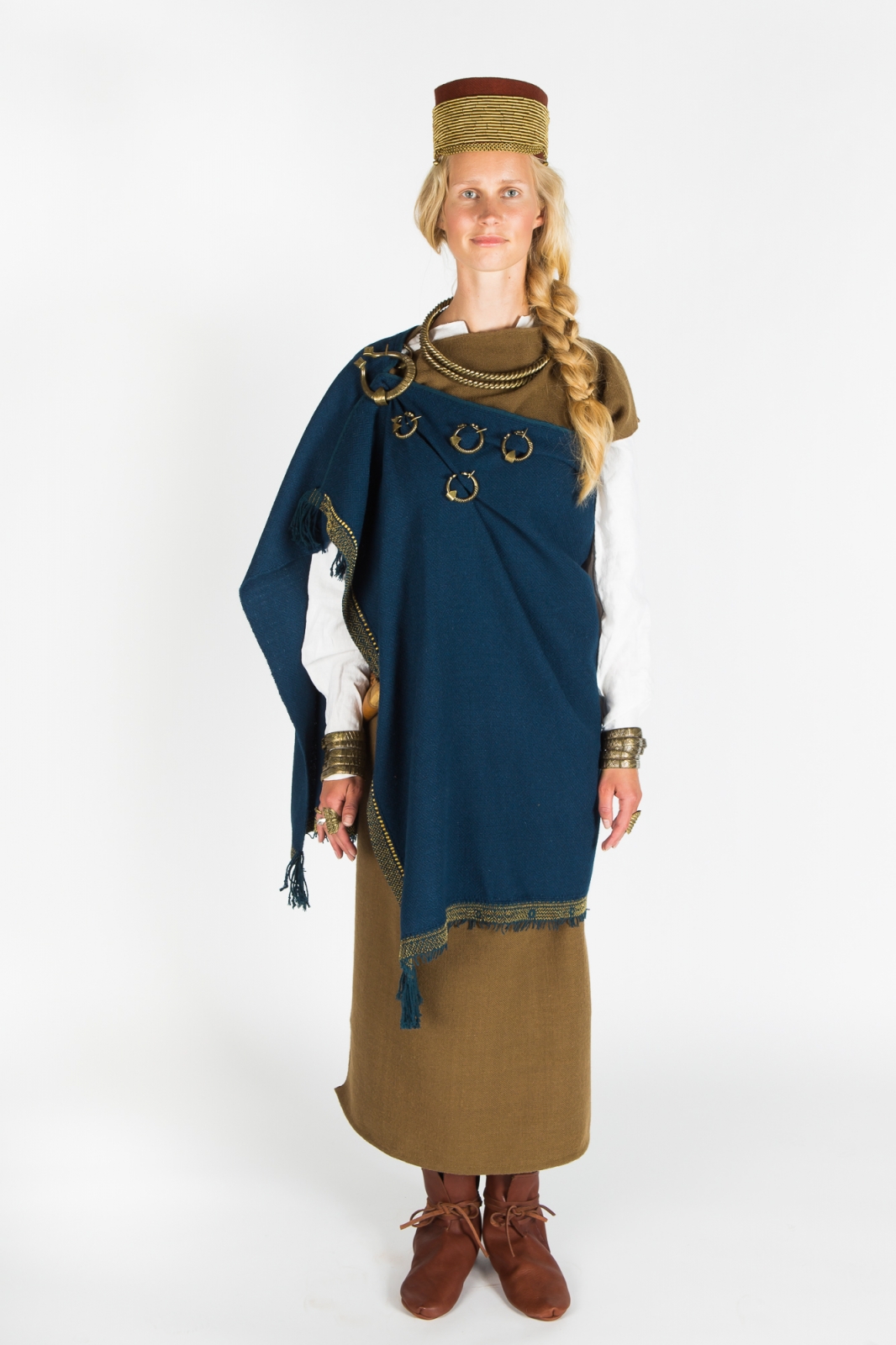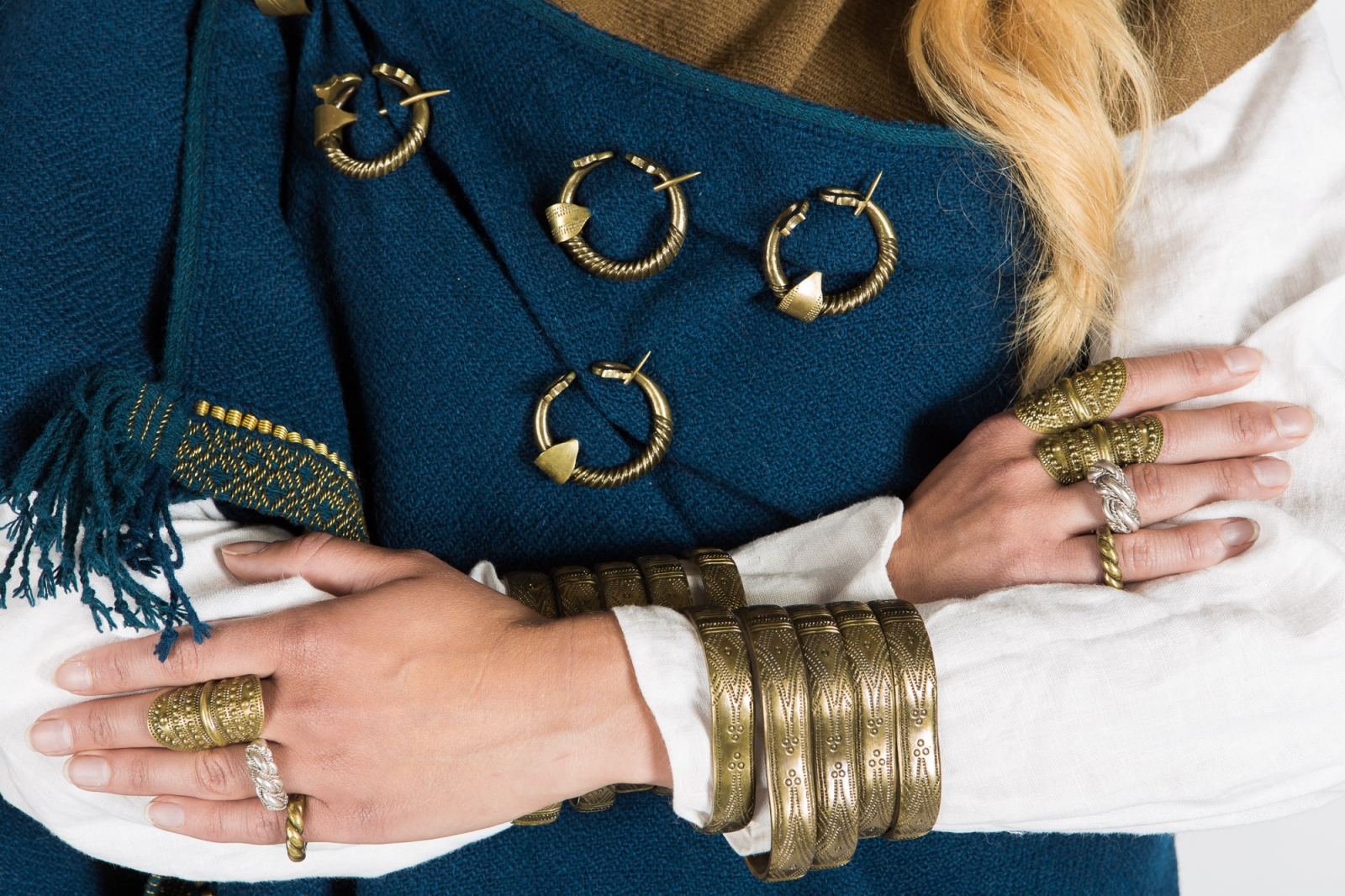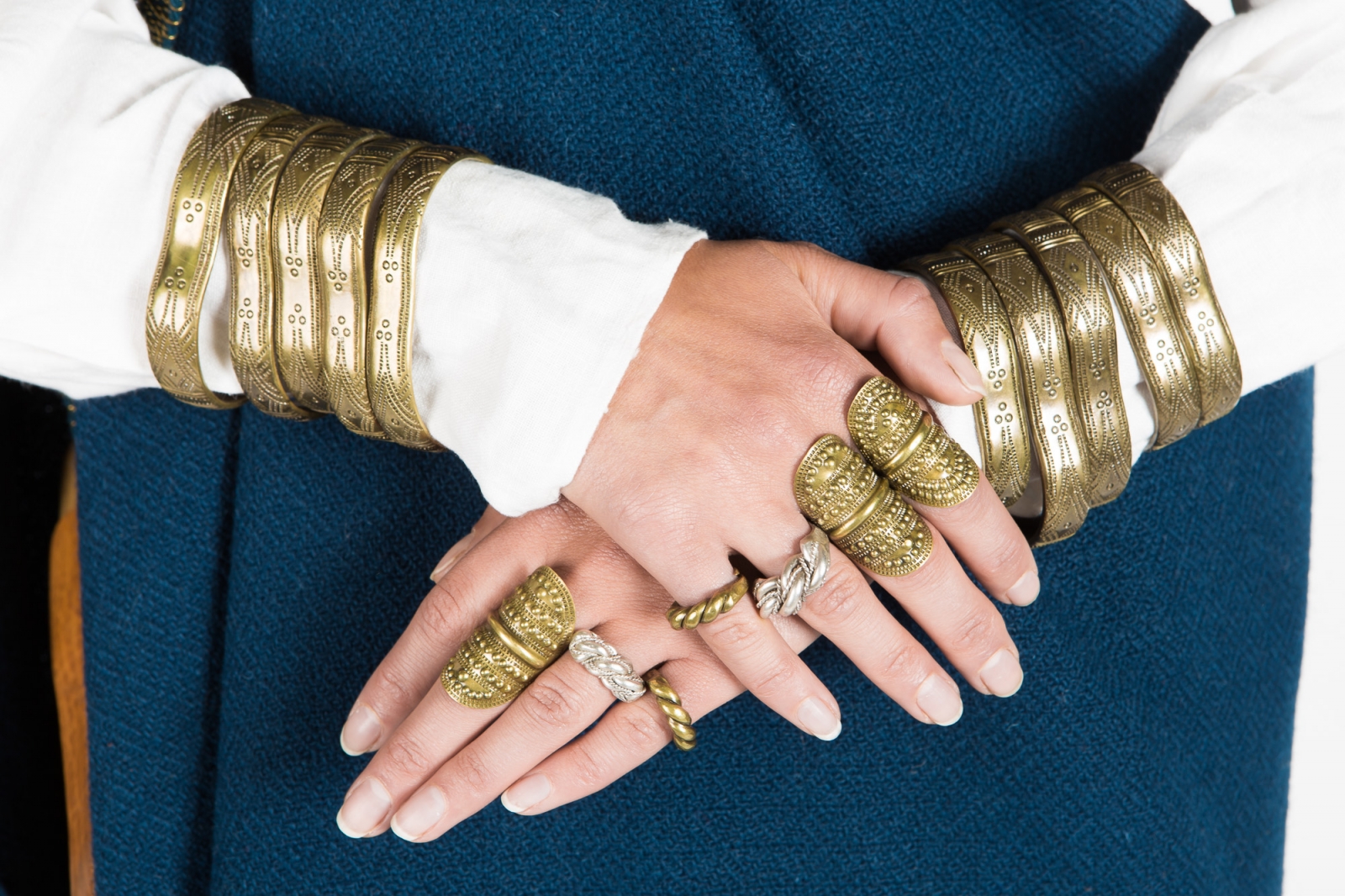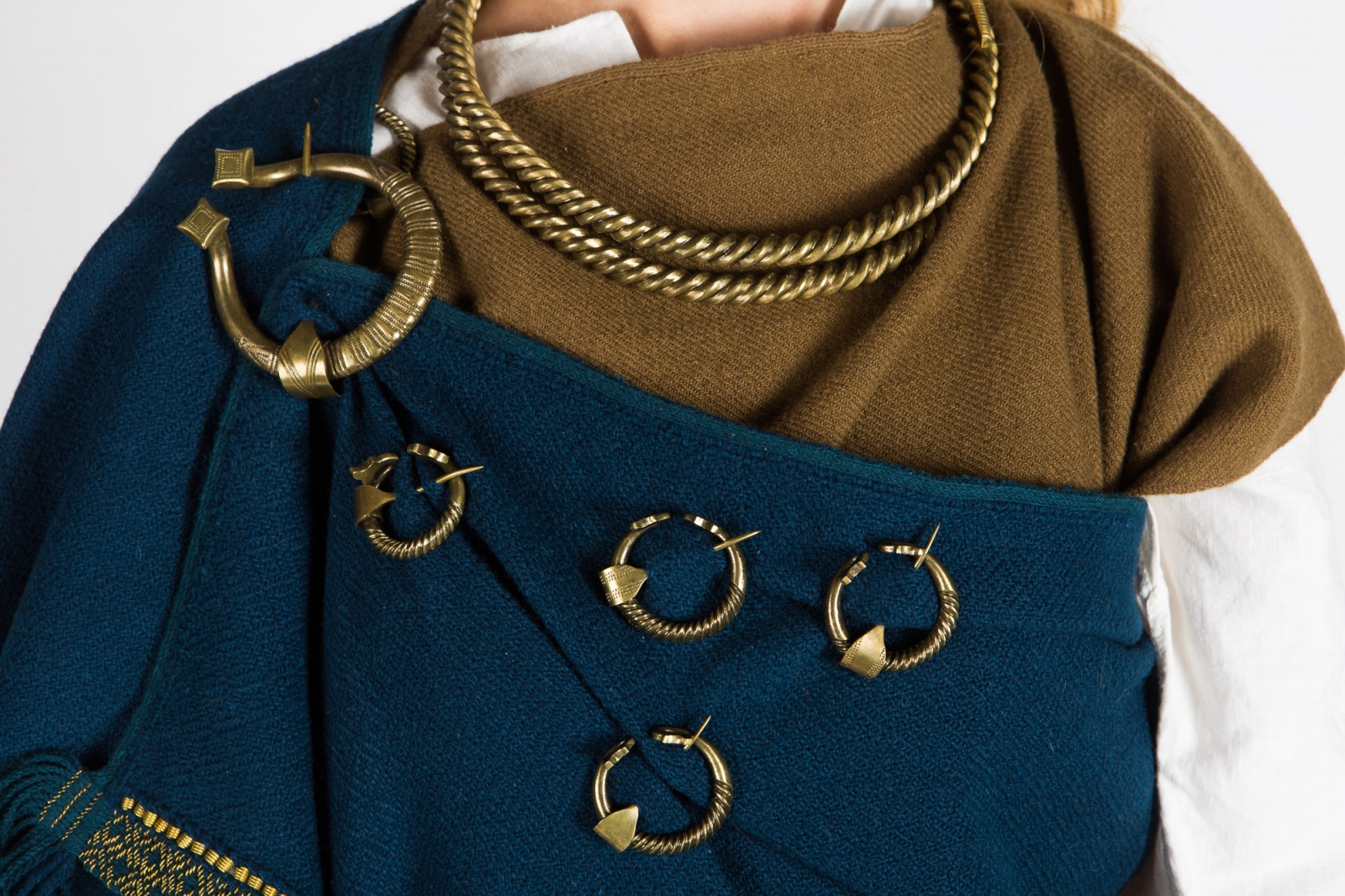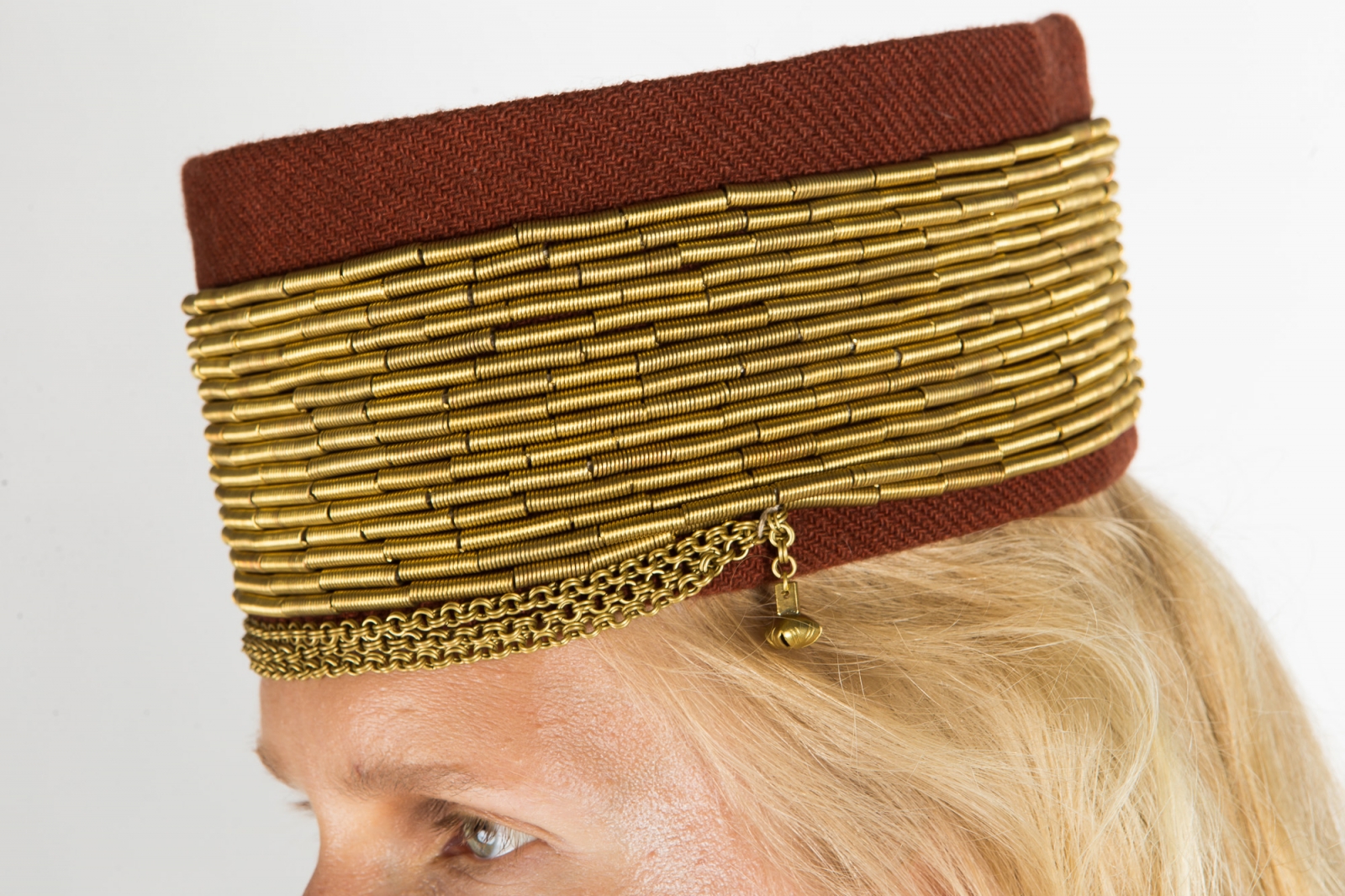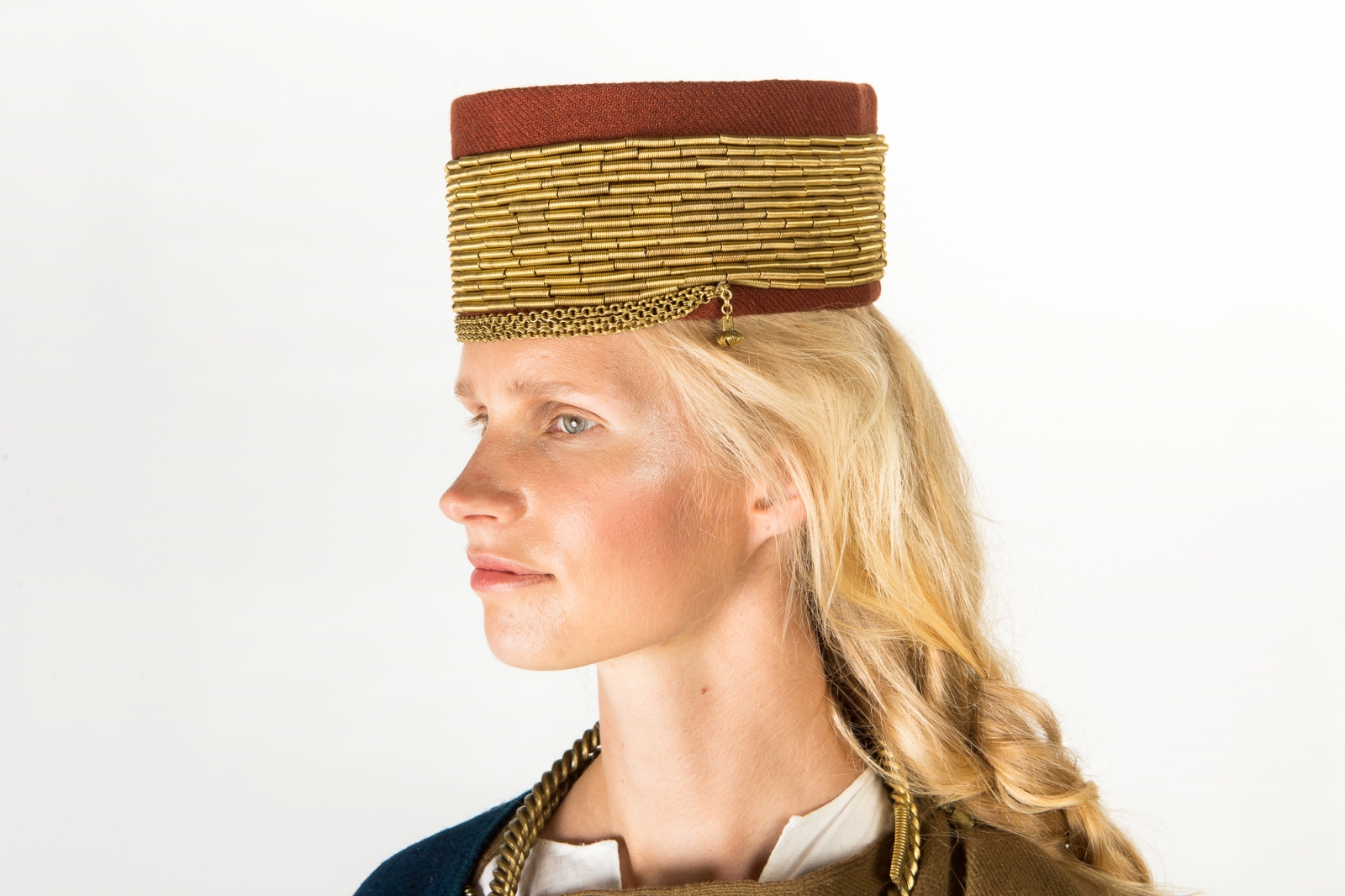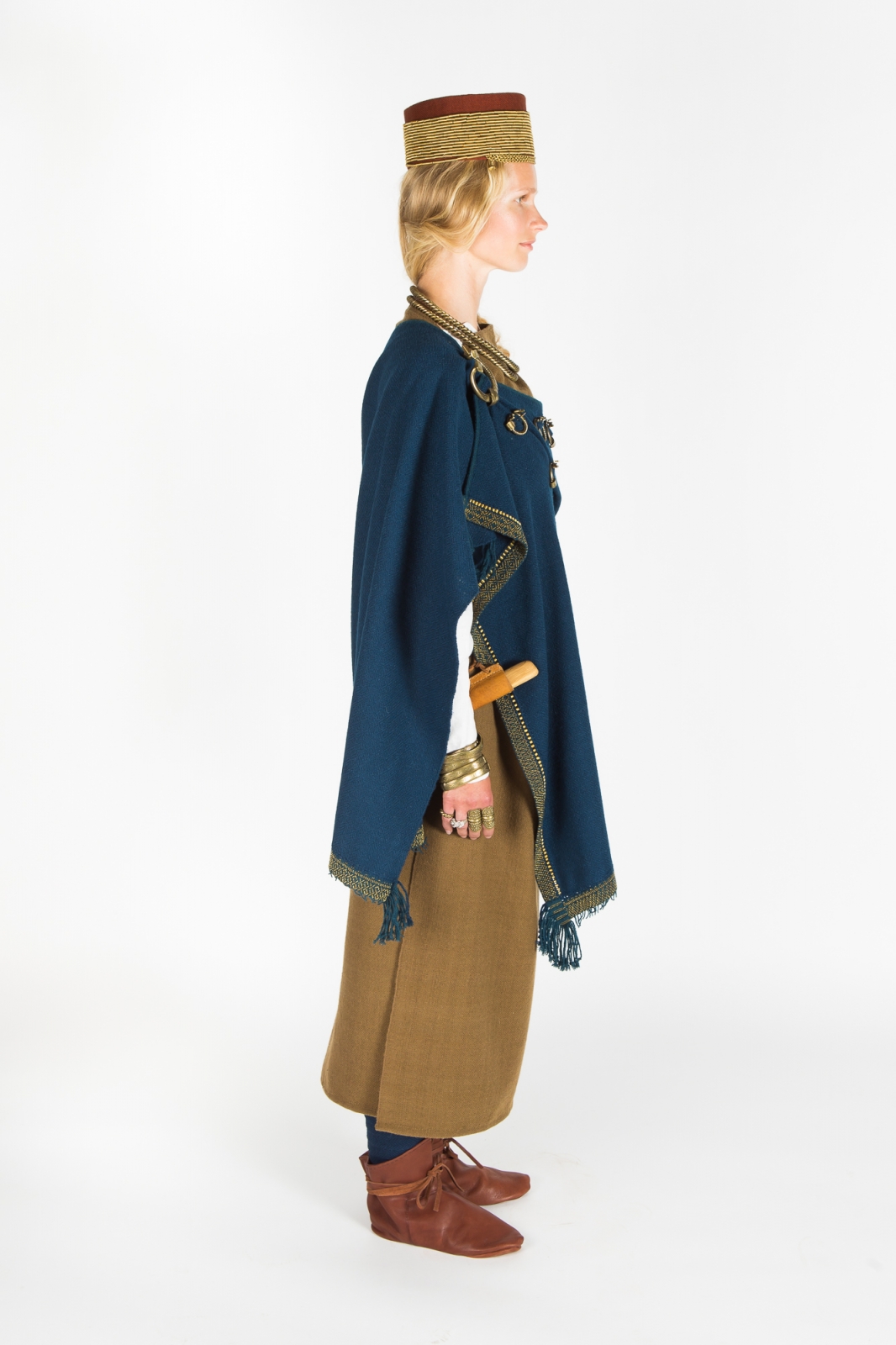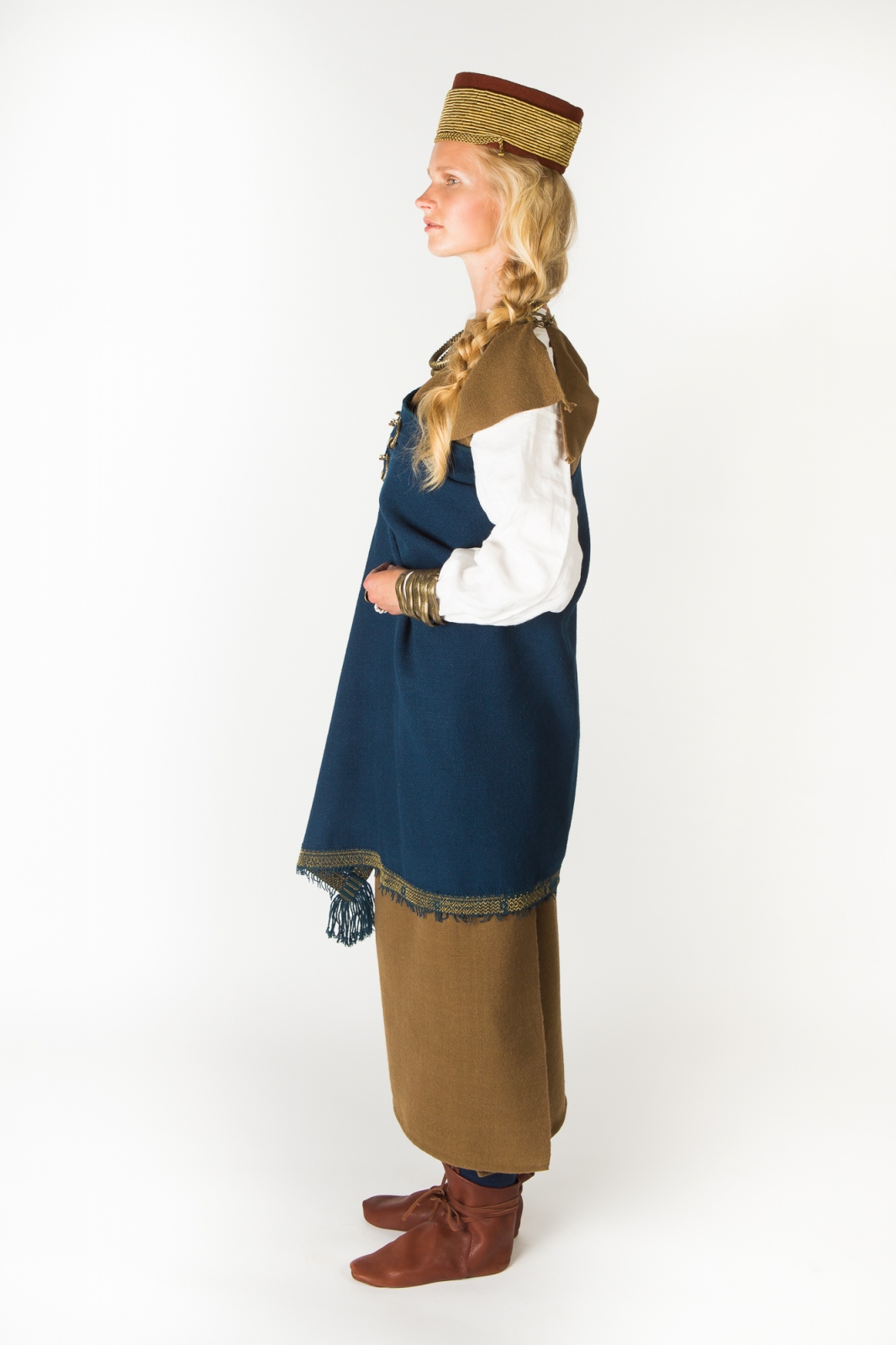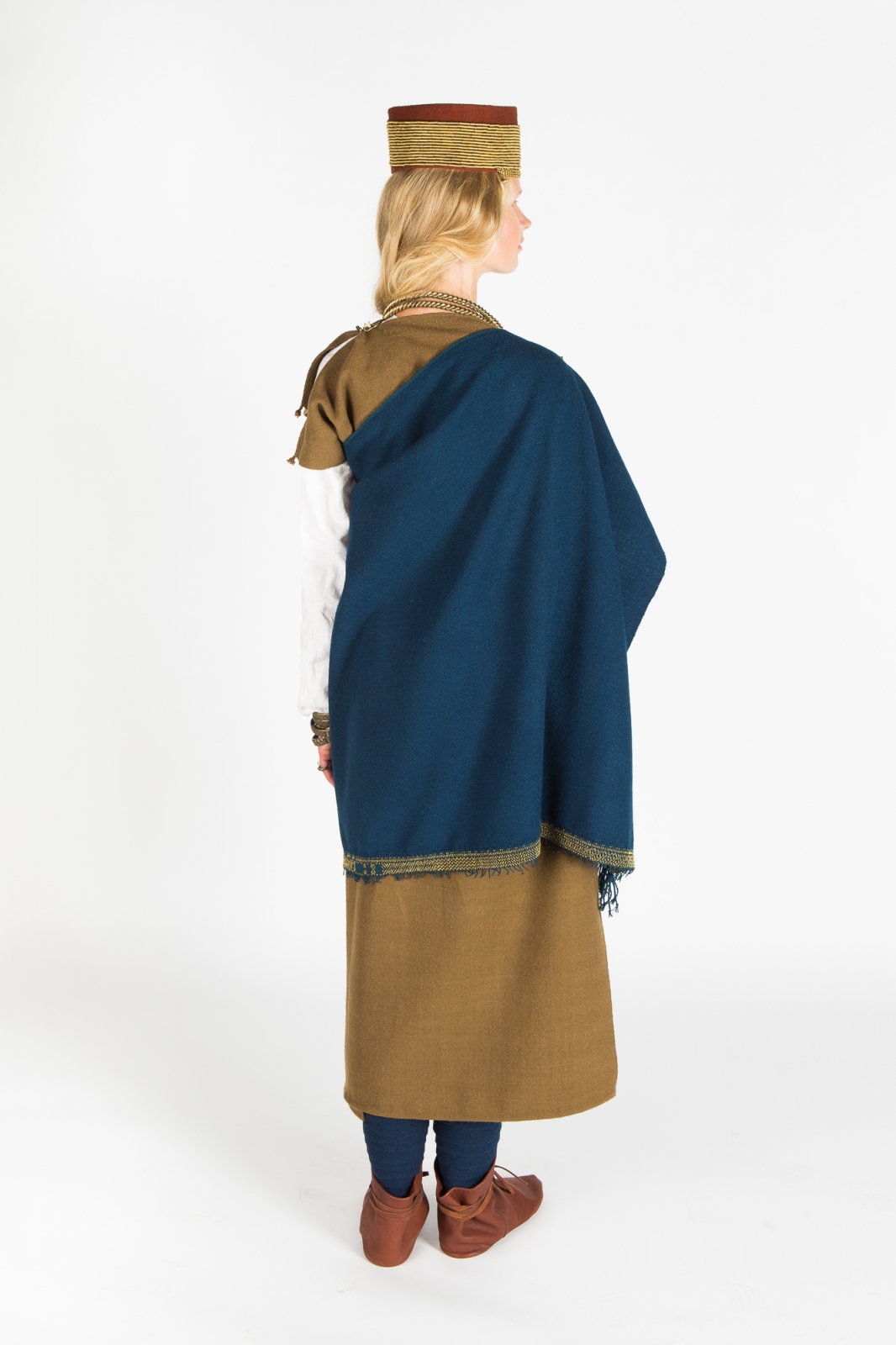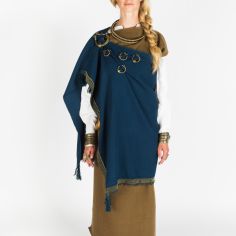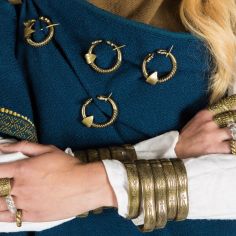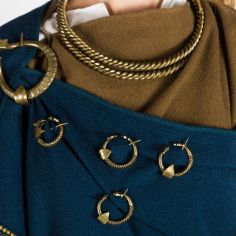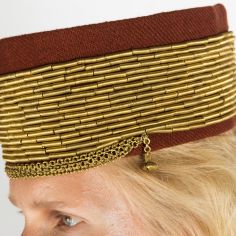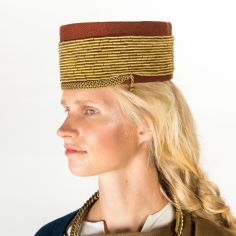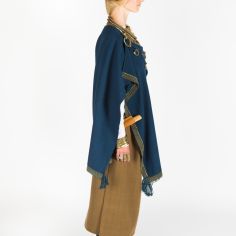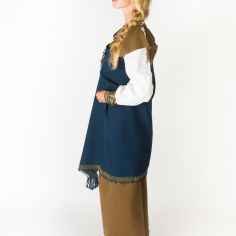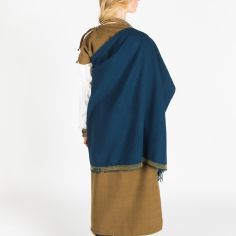Reconstruction of the 13-14th century Curonian woman’s costume
Brief information
The ancient tradition of creating and assembling national costumes was preserved throughout Curonian women's clothing over the ages. We can see how they were applied in the North-western Courland in the 15th century, for example. Beautiful Curonian woolen shawls were decorated along the edges with thousands of interwoven bronze spirals that collectively formed geometric patterns. Typical Curonian women’s adornments included armbands that were worn on both hands. These metal armbands were decorated by patterns shaped into the metal itself, the style of which changed over time. Metal neck-ring that were twisted or braided in style were worn around the neck, at the ends of which hung pendants. Crowns made of twisted bronze metal were used as head ornaments.
History and Origin
Archaeological costumes are garments that have been reconstructed based on materials found in excavations – from fragments of cloth, decorations and adornment. Archaeological excavations unearthing evidence dating back to the 16th century, give us an understanding of what local populations – the Curonians, Semigallians, Selonians, Latgallians, as well as Livs and Vends, wore.
The excavated materials have been preserved from the long standing tradition of dressing for the journey into the 'afterlife' whereby our Ancestors dressed in their best – rich, festive and adorned clothing. The oldest materials from which we are able to reconstruct archeological costumes, date back to the 7th century. In the centuries following, it appears each ethnic group developed its own distinct traditions for costume making. Over time newer traditions replaced the material culture of those ancient people – however, these newer traditions bridged traditional materials with the latest and more modern trends of that time. This eventually led to the 19th century Latvian traditional national costume that we all know today. This costume looks different, not only in its appearance/style, but its technical composition – when compared to its predecessors.
Archaeological costumes are mostly dark blue in color and are characterized by the use of metal decorations, the style of which varies between each tribe. Part of the ancient tradition of costume-making survived throughout the ages, so that despite changes along the way, there has remained an unaltered form reflected through all costumes.
